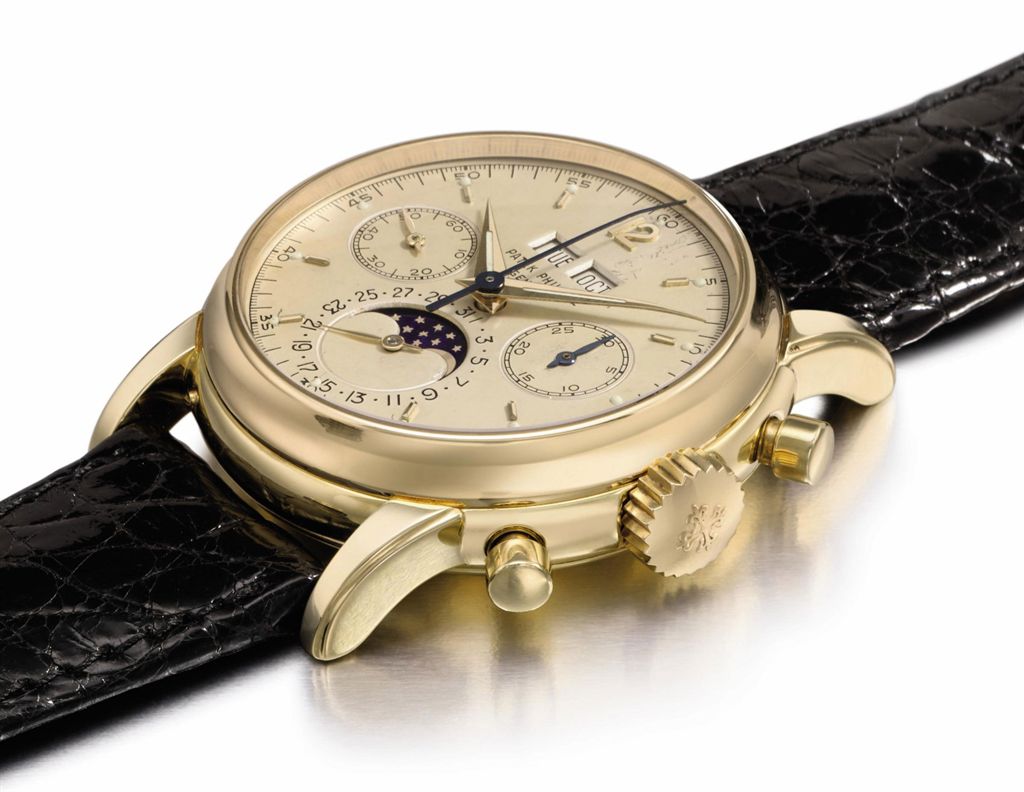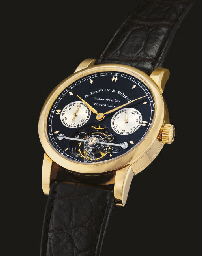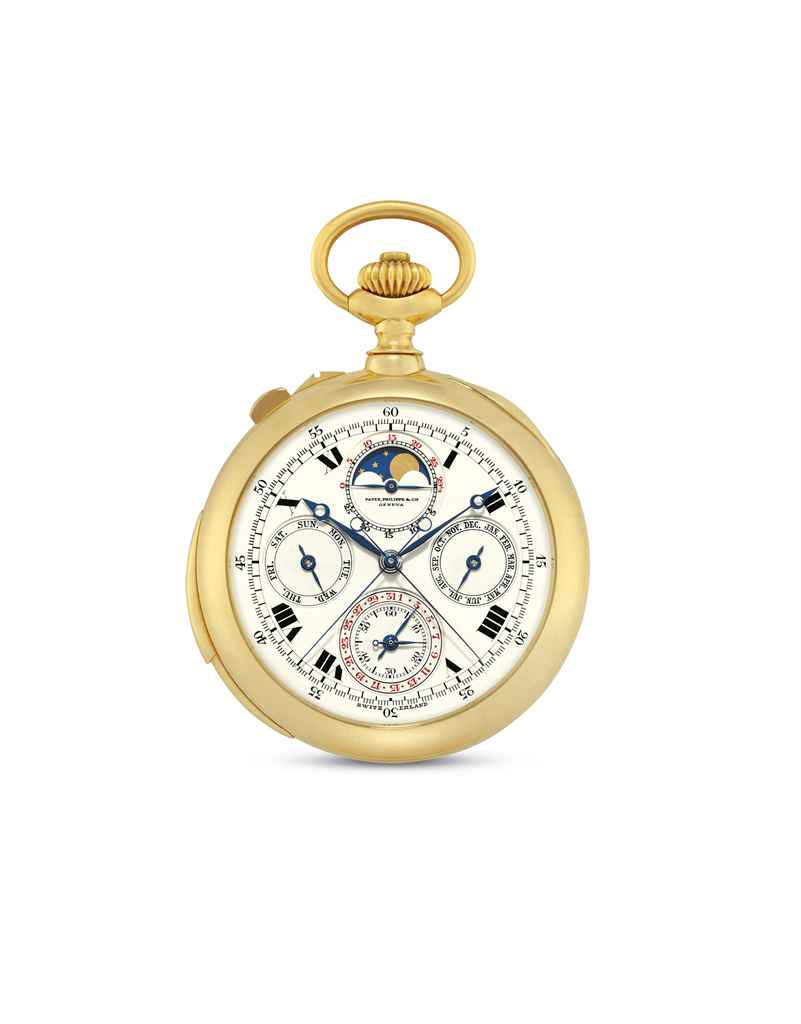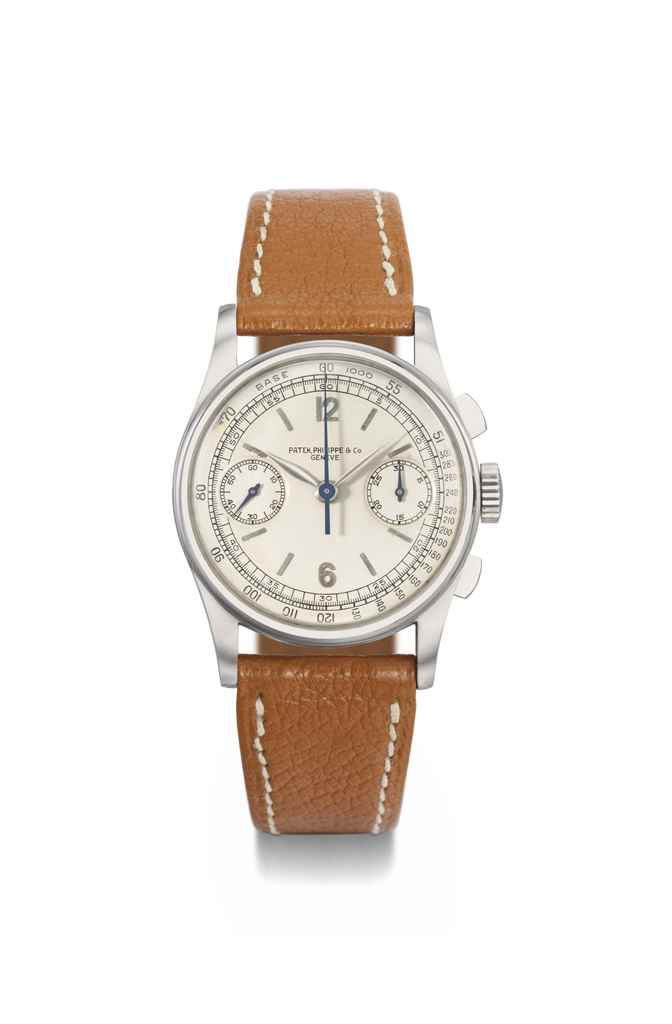A fine and rare Queen Anne verge pocket watch movement Thomas Tompion and George Graham London, number 4650, circa 1713 The full plate gilt verge movement with four Egyptian pillars pinned through the frontplate and three-arm sprung steel balance, the backplate with fine leaf-bordered symmetrical foliate scroll pierced and engraved balance cock with female mask decoration at the base and conforming pierced broad foot flanked by silvered regulation disc with adjacent applied foliate scroll infill opposing signature Tho: Tompion, Geo: Graham, LONDON and engraved serial number 4560, the frontplate stamped with repeat serial number, movement diameter 39mm, now fitted to a late 18th century circular white enamel Roman numeral sedan timepiece dial with blued steel spade hands, the case contemporary to the dial with hinged cast brass bezel fitted with convex glass within moulded cavetto surround, the rear with circular hinged brass cover and brass suspension ring fitted to upper margin, 14.5cm (5.75ins) diameter. Thomas Tompion has often been referred to as the 'father of English clock and wachmaking'. When considering the legacy of his work and influence on subsequent generations, such a compliment is justly deserved. Born in Ickwell, Suffolk in 1639 Thomas Tompion appears to have developed an affinity for metalworking from his father, also named Thomas, who worked as a blacksmith. By 1670 Tompion had moved to London and was working in the clock and watchmaking trade. Although there is no record of his apprenticeship or whether he received any formal training prior to moving to London, he quickly became established and obtained his freedom of the Clockmaker's Company in late 1671. His early clocks demonstrate a close working relationship with the Fromanteel, East and Knibb workshops. Around this time Tompion became friendly with eminent mathemeticians and scientists such as Robert Hooke and Jonas Moore - perhaps the most progressive and inventive minds of the day. Such associations lead to Royal commissions, firstly from Charles II for whom Tompion is known to have made one of the earliest balance-spring watches in 1676 and later William III who ordered numerous clocks to furnish his various palaces throughout his reign. As well as being an extremely talented artisan Tompion was also commercially minded, cleverly introducing serial numbering for his watches and clocks from around 1681/2. This, as well as maintaining a high degree of refinement in both the design and construction of his clocks and watches, ensured the highest level of exclusivity for clients purchasing from him. In around 1700 Thomas Tompion took a former apprentice, Edward Banger, into partnership however this arrangement came to an abrupt end in 1707-8 for reasons unknown. On Banger's departure Tompion reverted to working alone until he found confidence in George Graham who had been engaged as a journeyman for Tompion since 1696. Graham's character had already been given the seal of approval by Tompion who allowed him to marry his niece, Elizabeth, in 1704; however it still would be a few years before Tompion would take Graham into partnership which he eventually did in 1711. Thomas Tompion died in November 1713 leaving the business to George Graham who maintained the same exacting standards and became famous in his own right with notable achievements including the development of the deadbeat escapement for pendulum clocks and the cylinder escapement for watches. He continued Tompion's sequential numbering for his clocks and watches and assisted John Harrison with his development of the marine timekeeper. George Graham died in 1751 and was buried next to Thomas Tompion at Westminster Abbey. The current lot belongs to a group of less than twenty examples signed by both Tompion and Graham from around four hundred known surviving watches from Tompion's first numbered series as recorded by Jeremy Evans in Evans, Carter & Wright THOMAS TOMPION 300 YEARS. The movement
A fine and rare Queen Anne verge pocket watch movement Thomas Tompion and George Graham London, number 4650, circa 1713 The full plate gilt verge movement with four Egyptian pillars pinned through the frontplate and three-arm sprung steel balance, the backplate with fine leaf-bordered symmetrical foliate scroll pierced and engraved balance cock with female mask decoration at the base and conforming pierced broad foot flanked by silvered regulation disc with adjacent applied foliate scroll infill opposing signature Tho: Tompion, Geo: Graham, LONDON and engraved serial number 4560, the frontplate stamped with repeat serial number, movement diameter 39mm, now fitted to a late 18th century circular white enamel Roman numeral sedan timepiece dial with blued steel spade hands, the case contemporary to the dial with hinged cast brass bezel fitted with convex glass within moulded cavetto surround, the rear with circular hinged brass cover and brass suspension ring fitted to upper margin, 14.5cm (5.75ins) diameter. Thomas Tompion has often been referred to as the 'father of English clock and wachmaking'. When considering the legacy of his work and influence on subsequent generations, such a compliment is justly deserved. Born in Ickwell, Suffolk in 1639 Thomas Tompion appears to have developed an affinity for metalworking from his father, also named Thomas, who worked as a blacksmith. By 1670 Tompion had moved to London and was working in the clock and watchmaking trade. Although there is no record of his apprenticeship or whether he received any formal training prior to moving to London, he quickly became established and obtained his freedom of the Clockmaker's Company in late 1671. His early clocks demonstrate a close working relationship with the Fromanteel, East and Knibb workshops. Around this time Tompion became friendly with eminent mathemeticians and scientists such as Robert Hooke and Jonas Moore - perhaps the most progressive and inventive minds of the day. Such associations lead to Royal commissions, firstly from Charles II for whom Tompion is known to have made one of the earliest balance-spring watches in 1676 and later William III who ordered numerous clocks to furnish his various palaces throughout his reign. As well as being an extremely talented artisan Tompion was also commercially minded, cleverly introducing serial numbering for his watches and clocks from around 1681/2. This, as well as maintaining a high degree of refinement in both the design and construction of his clocks and watches, ensured the highest level of exclusivity for clients purchasing from him. In around 1700 Thomas Tompion took a former apprentice, Edward Banger, into partnership however this arrangement came to an abrupt end in 1707-8 for reasons unknown. On Banger's departure Tompion reverted to working alone until he found confidence in George Graham who had been engaged as a journeyman for Tompion since 1696. Graham's character had already been given the seal of approval by Tompion who allowed him to marry his niece, Elizabeth, in 1704; however it still would be a few years before Tompion would take Graham into partnership which he eventually did in 1711. Thomas Tompion died in November 1713 leaving the business to George Graham who maintained the same exacting standards and became famous in his own right with notable achievements including the development of the deadbeat escapement for pendulum clocks and the cylinder escapement for watches. He continued Tompion's sequential numbering for his clocks and watches and assisted John Harrison with his development of the marine timekeeper. George Graham died in 1751 and was buried next to Thomas Tompion at Westminster Abbey. The current lot belongs to a group of less than twenty examples signed by both Tompion and Graham from around four hundred known surviving watches from Tompion's first numbered series as recorded by Jeremy Evans in Evans, Carter & Wright THOMAS TOMPION 300 YEARS. The movement















Testen Sie LotSearch und seine Premium-Features 7 Tage - ohne Kosten!
Lassen Sie sich automatisch über neue Objekte in kommenden Auktionen benachrichtigen.
Suchauftrag anlegen